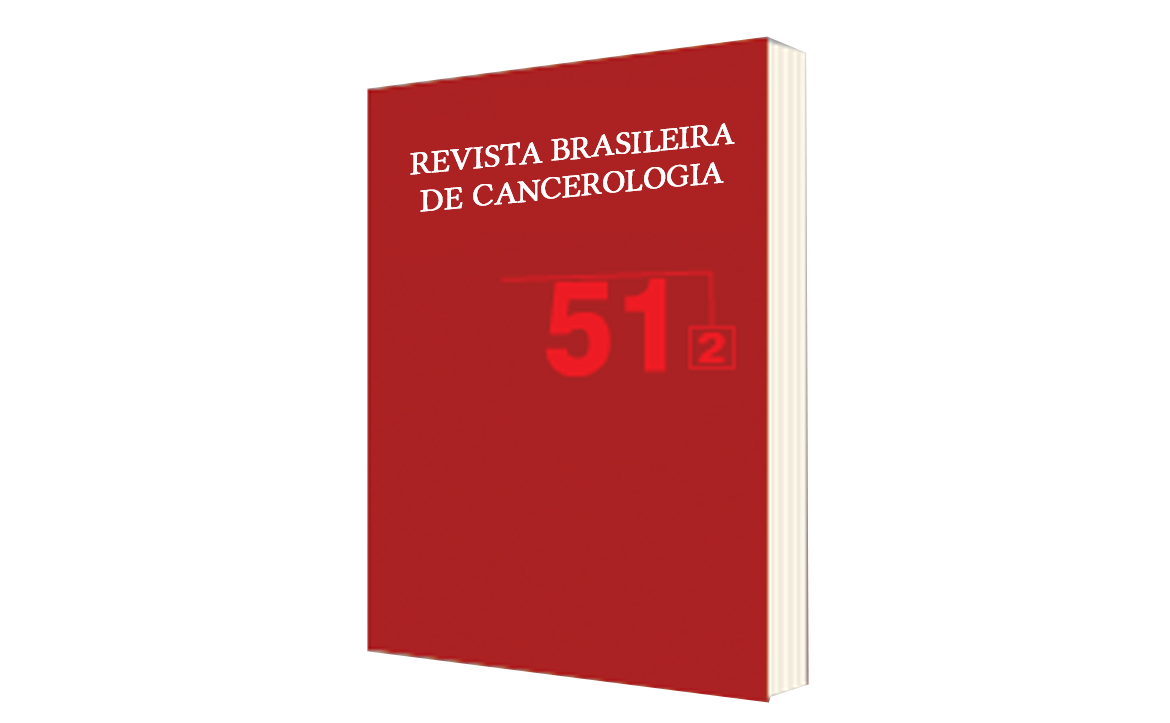Surgical treatment of gastric cancer in young patients: 05 years experience at INCA
DOI:
https://doi.org/10.32635/2176-9745.RBC.2005v51n2.1972Keywords:
Gastric neoplasms, Young patients, SurvivalAbstract
Objectives: To analyze the results of surgical treatment for gastric Adenocarcinoma in patients with 40 years old or less, focusing in surgical aspects, morbidity, mortality and survival. Methods: It was performed an analysis of the patients database of the National Cancer Institute of Brasil - Unit I/ INCA, Stomach Group- Abdominopelvic Surgery Department, between 1996 and 2001, with a total of 39 patients with gastric adenocarcinoma who were 40 years old or less, representing 6% of the surgically treated patients for gastric adenocarcinoma during this time interval (39/579). Results: Age ranged from 20 to 40 years (average: 34.6), with 21 men and 18 women. The most prevalent stages were III and IV, with 28% and 51% respectively. In the surgical risk evaluation (American Society of Anesthesiologists: ASA) and performance status (PS) analysis, ASAII and PS 0 were the most frequent (41 and 56.4% respectively). The most common location was distal and medium/distal (44%). The most prevalent symptom was epigastric pain, followed by weight loss. The resecabilty rate was 74.3 %, with 21 radical and 8 palliative surgeries, being the subtotal gastrectomy the most common procedure. Regarding the lynphadenectomy 17 patients (43.6%) were submitted to D2, 6 (15.4%) to D1 and 1 (2.5%) to D0. The global rate of complications was 33.3%, most of them, minor infectious complications(30.7%), treated successfully with antibiotics. There was no difference in morbidity between radical and palliative resections (p= NS), and there was no operative death in the resected group. The average hospital stay was 12. 2 days (4 - 101 days). Total gastrectomy had a higher morbidity (15.3 %). The median survival was 15 months (0 - 65 months), with better survival for stages I and II, and worse for stages III and IV. The median survival was better for radical procedures (R0: 31 months; R1/R2: 12 months; Iresectable: 03 months - p < 0.05). The mortality rate was 4 % (01 iresectable lesion). The recurrence rate was 25.6% (8/29), occurring in patients in stages III and IV, with median survival of 14 months. Discussion: Survival of young patients with gastric cancer depends on tumor stage at the diagnosis. The chance of cure resides on surgical treatment, which might be the most radical, generally encouraged by the good Performance Status and general nutritional status. The infectious complications rate (33.3%) found reflects a concern regarding scientific criteria of this study, because these were treated sucessfully with antibiotics and could not be directly related to the radical procedures.









